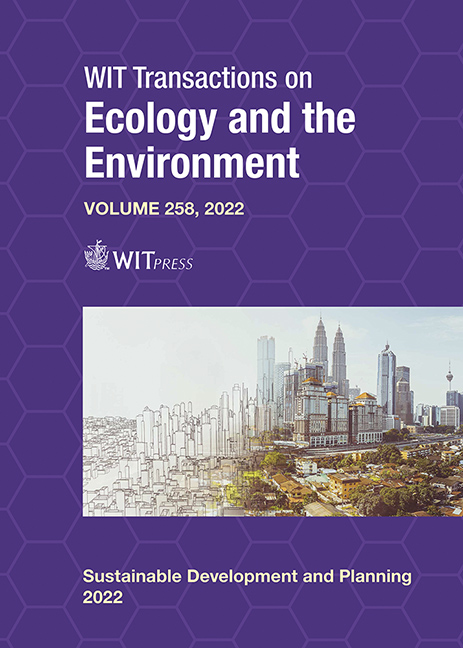PASSIVE DESIGN STRATEGIES FOR ZERO ENERGY HOUSES IN DESERT ENVIRONMENTS: THE CASE OF SOLAR DECATHLON MIDDLE EAST 2021
Price
Free (open access)
Transaction
Volume
258
Pages
13
Page Range
139 - 151
Published
2022
Paper DOI
10.2495/SDP220121
Copyright
Author(s)
ESRA TREPCI, EDWIN RODRIGUEZ-UBINAS, ZAHRAA ALSHIKH, SGOURIS SGOURIDIS
Abstract
The high energy consumption of buildings in desert environments, caused mainly by high cooling needs, calls for mitigation. In Dubai, it is estimated that buildings account for 70% of the total energy demand, and this share is expected to grow due to the urbanization rate. One strategy to reduce building consumption is implementing zero energy buildings. These are energy-efficient buildings capable of generating their own energy consumption. Passive design options are key for managing building energy demand. This work analyses the passive design options used in zero energy houses in Dubai for the Solar Decathlon Middle East 2021, where the participating teams designed, constructed, and testoperated fully solar-powered houses. First, we describe the strategies that include compactness of the building shape, orientation, and the envelope’s thermal performance, and compare them with the best practices for the region. We find that the high-performing opaque surfaces exceed Dubai’s Green Building Rating system, the transparent surfaces are mostly placed in the north unshaded, the east and west facades have little to no openings, while the south ones are mostly horizontally shaded, and there is a low window to wall ratio. Lastly, we consider the effect of these strategies against the monitored building performance during the competition: the light level (lux), the electricity consumed for heating, cooling, ventilation, and lighting (kWh), the indoor temperature (°C), controlling for solar radiation (W/m2) and outdoor temperature. The findings highlight solutions that best respond to Dubai’s environment and help to improve the energy performance of the buildings in desert climates.
Keywords
zero energy buildings, passive design strategies, desert environment, solar decathlon





